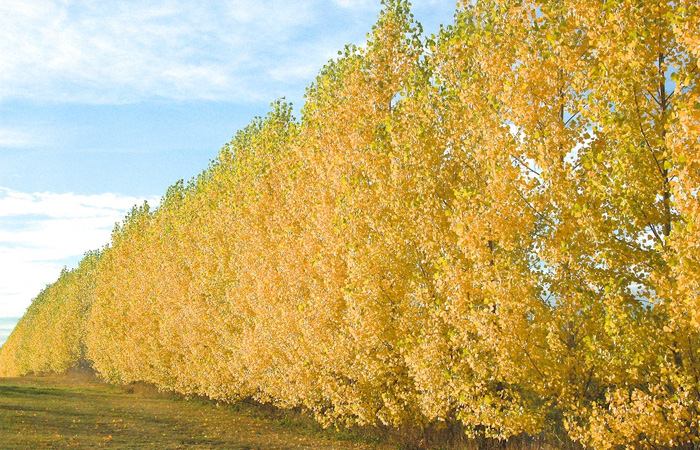Deeply Rooted
Shelter Belting

I have lived in south-east Manitoba my whole life and after 24 years I have come to realize something profound.
Manitoba is flat!
You may not believe it at first but it really is true! Next time you are walking down a gravel road bring your binoculars because Manitoba is so flat that if you look down the road carefully you can sometimes see the back of your own head.
With our landscape being so void of terrain it can pose some unique problems. Wind can be an issue. When there is nothing in the way to slow it down it can gather some speed and bring that wind-chill we are all so fond of.
It is this wind-chill effect that greatly limits the variety of trees that can survive in our prairie landscape. If you plant a zone 4 tree in an open field it will suffer severe cracking in the bark, tip freezing and most certainly death. However if you take the same tree and plant it in the forest instead it will thrive! (Providing it is cared for properly of course.)
Having even a single row of half-grown trees to block the north wind will greatly increase your chances of success. Having three or even four rows of mature trees surrounding your property can drastically change your yards environment.
When you have trees and shrubs blocking the wind for you it can accomplish many goals at once. It will block snow from blowing into your yard and burying your driveway. It can prevent dust from gravel roads and fields being blown into your yard. It can even help reduce the chance of air borne diseases infecting farms and livestock.
Shelter belts can also solve other problems like lack of privacy. You don’t really want your neighbours to be able to give an opinion on your Livingroom paint job without ever being in the house.
So how do we go about achieving, securing, acquiring, creating, producing and maintaining such a wondrous wonder that will protect us from the unspeakable horrors I just spoke of?
The first step is to know your area. Know the land, the soil, the drainage, and the sun exposure. Once you know these factors you will be able to better determine what trees will grow best in your area. If you have heavy clay soil Green Ash and Siberian Elm will be your best option for soil tolerance. If the ground is often wet and heavy Willows and Green Ash will be your best bet. Sandy soil with high acid is the favourite of Maples and many others.
The next important factor is preparing the area. It will be critically important that your new baby trees don’t compete for water, nutrients, and sunlight. Each plant will need at the least a 3 foot wide patch of no grass or weeds. If the grass and weeds close in on the little plants it can steal 80% of all the water, nutrients and their growth for years! You can maintain this circle of happiness with some wood chips or tilling. Just be sure that as your trees grow bigger you stay a little further from the roots each time you till so as not to damage them.
Perhaps the trickiest part is watering. The little plants will need approximately 1 inch of rain every week. If the rain does not supply this you will need to find other ways to provide. This could be a garden hose, soaker hose, or a water tank on a quad. Or perhaps a rain dance. (I have never succeeded in this method yet…)
In the end the better you shelter your trees when they are young the better they will shelter you when they grow up.




